weather.com meteorologists
Parts of the United States searing in long-lasting heat might be wondering if their hottest time of year has passed and when it will finally cool down.
The average peak of summertime heat varies across the Lower 48, but for the majority of Americans, it happens in July or early August. This is shown in the map below from NOAA, which displays when the average hottest day of the year happens based on the 1991-2020 average.
(MORE: Here's When Hurricane Season's Annual Peak Usually Begins)
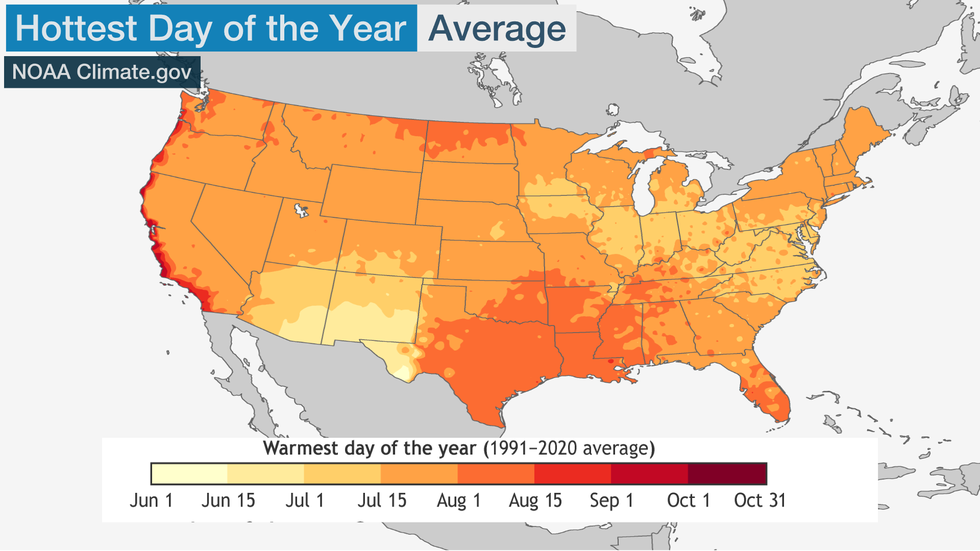 This map shows when the hottest time of year is, on average, across the Lower 48 states.
This map shows when the hottest time of year is, on average, across the Lower 48 states.Of course, these are just long-term averages. In any given year, bulging heat domes of high pressure aloft can deliver the year's hottest weather for a few weeks on either side of these average dates.
(US CURRENT MAPS: Temperatures | Heat Indices | Dew Points)
There are several interesting features on the map that caught our eye.
June Summer Solstice Is Key
The hottest time of the year over much of the U.S. arrives days, or in some cases weeks, after the late June summer solstice.
The sun is highest in the sky and delivers its most direct radiation over the Northern Hemisphere at the summer solstice.
But it actually takes weeks to warm up Earth's surface enough for appreciable changes. It then takes more time for the air above the land to warm. So that's why there's a seasonal lag between the solstice and the typical hottest day of the year.
The Early Peak In The Desert Southwest
The hottest time of year in both El Paso, Texas, and Tucson, Arizona, is usually in the last week of June. In Phoenix, it's in early July.
The reason this happens earlier from the Big Bend of Texas to southeastern Arizona is because of the North American monsoon – a seasonal shift in wind direction that brings more moisture and more frequent showers and thunderstorms through July.
However, appreciably cooler air into these areas usually doesn't arrive until September. The monsoon is typically only a bit less hot, but more humid.
 These are the average monthly temperatures for Phoenix, based on 1991-2020 averages.
These are the average monthly temperatures for Phoenix, based on 1991-2020 averages.Where July Is The Heat Champion
July is the warmest month from the central Rockies to the central Plains, upper Midwest, Great Lakes, Ohio Valley and East.
This hottest time of year is usually in mid-July in New York, Washington, D.C., and Chicago, and in late July in Atlanta, Denver and Kansas City.
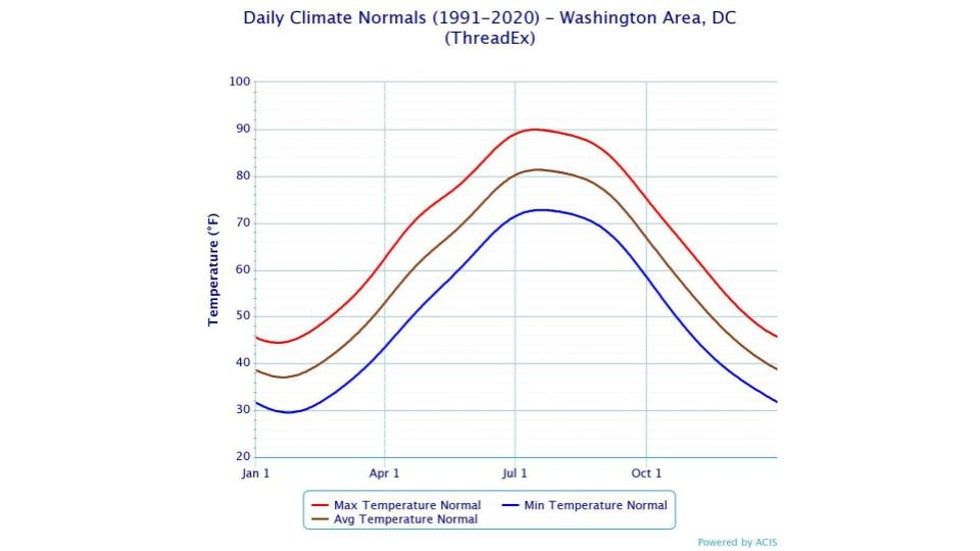 These are the average monthly temperatures for Washington, D.C., based on 1991-2020 averages.
These are the average monthly temperatures for Washington, D.C., based on 1991-2020 averages.August For The South
Early August tends to be the hottest time for parts of the South from central and eastern Texas into the Ozarks and lower Mississippi Valley. That includes Austin, Dallas, Houston, Little Rock and New Orleans.
In South Texas, that hottest time of year skews toward the middle of August.
By that time, the somewhat daily slow-moving thunderstorms of early summer give way to more persistent high pressure over the South that suppresses clouds and dries soil, helping temperatures to soar.
September can still remain steamy in these areas, with real heat relief usually holding off until October.
Much of the Florida Peninsula sees its hottest time of year in a broad peak from the end of July into August, including Miami and Tampa.
Florida's real heat relief usually arrives when the first cold front arrives in October.
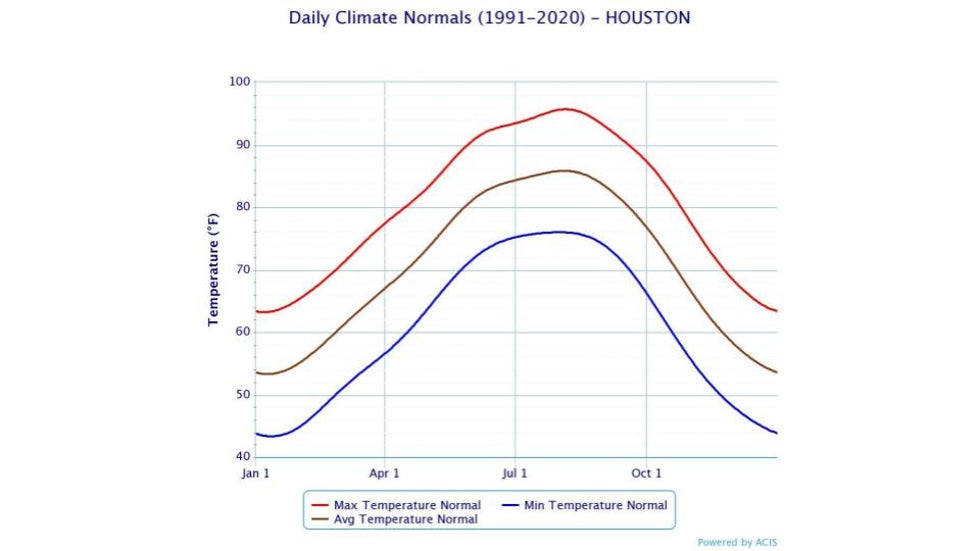 These are the average monthly temperatures for Houston, based on 1991-2020 averages.
These are the average monthly temperatures for Houston, based on 1991-2020 averages.West Coast Lag
A few locations along the West Coast aren't typically their hottest until fall.
In the heart of summer, the combination of the hot interior deserts and cool air over the ocean drives winds onshore along the coast, keeping low clouds, fog and cool air firmly in place.
Beginning in September, the upper-level wind pattern can set up to drive hot, dry winds from the deserts to the coast and offshore, known as Santa Ana winds in Southern California and Diablo winds in the Bay Area.
Because of that, downtown San Francisco's hottest time of year is near the end of September into early October.
In downtown Los Angeles, however, the seasonal heat peak is earlier, generally in late August, though they can certainly see a heat spike in a strong fall Santa Ana wind event.
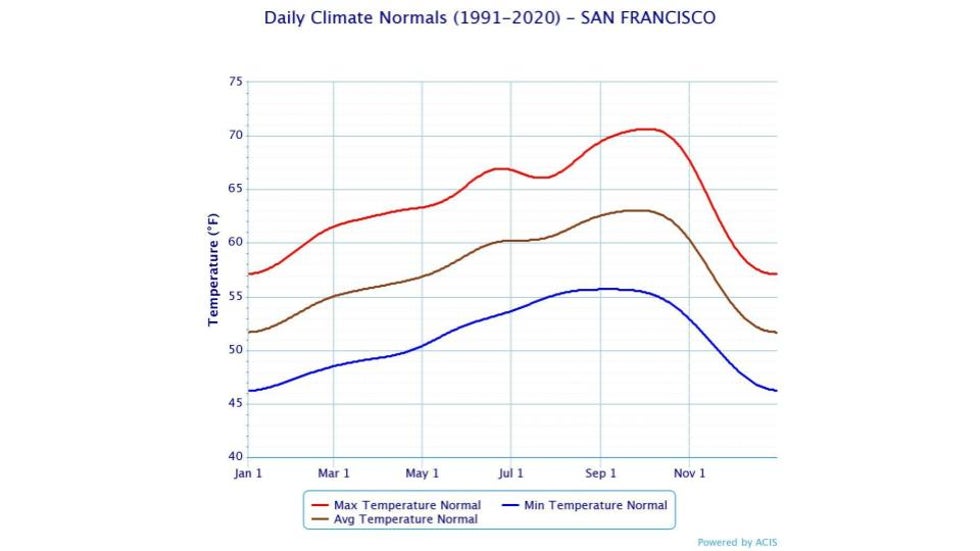 These are the average monthly temperatures for downtown San Francisco, based on 1991-2020 averages.
These are the average monthly temperatures for downtown San Francisco, based on 1991-2020 averages.What About Alaska And Hawaii?
July is generally the warmest time of the year for much of Alaska, but along the southern coastal areas, peak warmth doesn't occur until the last week of July into early August.
By late August and especially September, the temperature plunge accelerates in our 49th state.
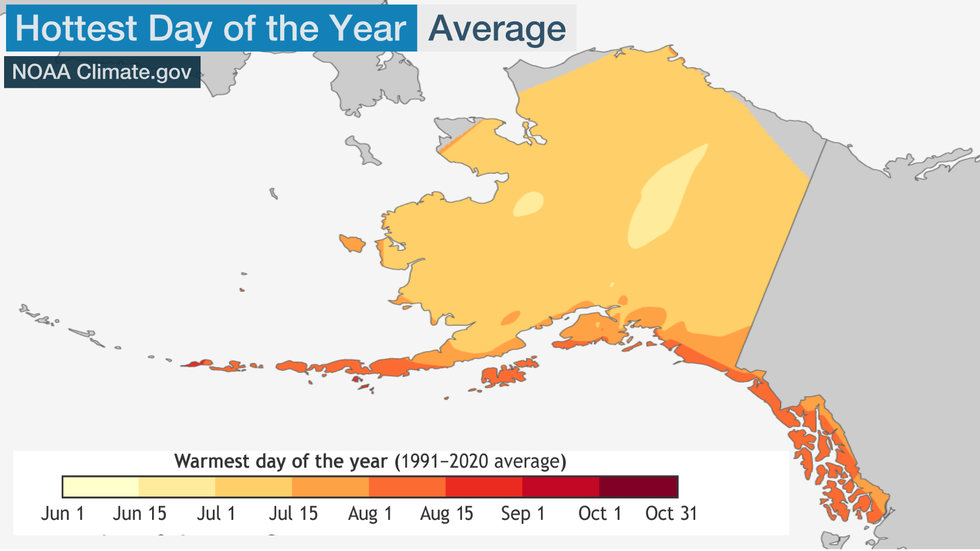 This map shows the average warmest day of the year across Alaska.
This map shows the average warmest day of the year across Alaska.In Hawaii, most areas don't see their warmest time of the year until August or September. Some high-mountain locations see peak summer temperatures much earlier.
That said, the joy of Hawaiian weather is the relatively little change in temperature year-round in the tropical Pacific. For example, Honolulu's "coolest" average high temperature in January is about 80 degrees. Their "hottest" average high in late August is about 89.
 This map shows the average warmest day of the year across Hawaii.
This map shows the average warmest day of the year across Hawaii.The Weather Company’s primary journalistic mission is to report on breaking weather news, the environment and the importance of science to our lives. This story does not necessarily represent the position of our parent company, IBM.
The Weather Company’s primary journalistic mission is to report on breaking weather news, the environment and the importance of science to our lives. This story does not necessarily represent the position of our parent company, IBM.

No comments:
Post a Comment